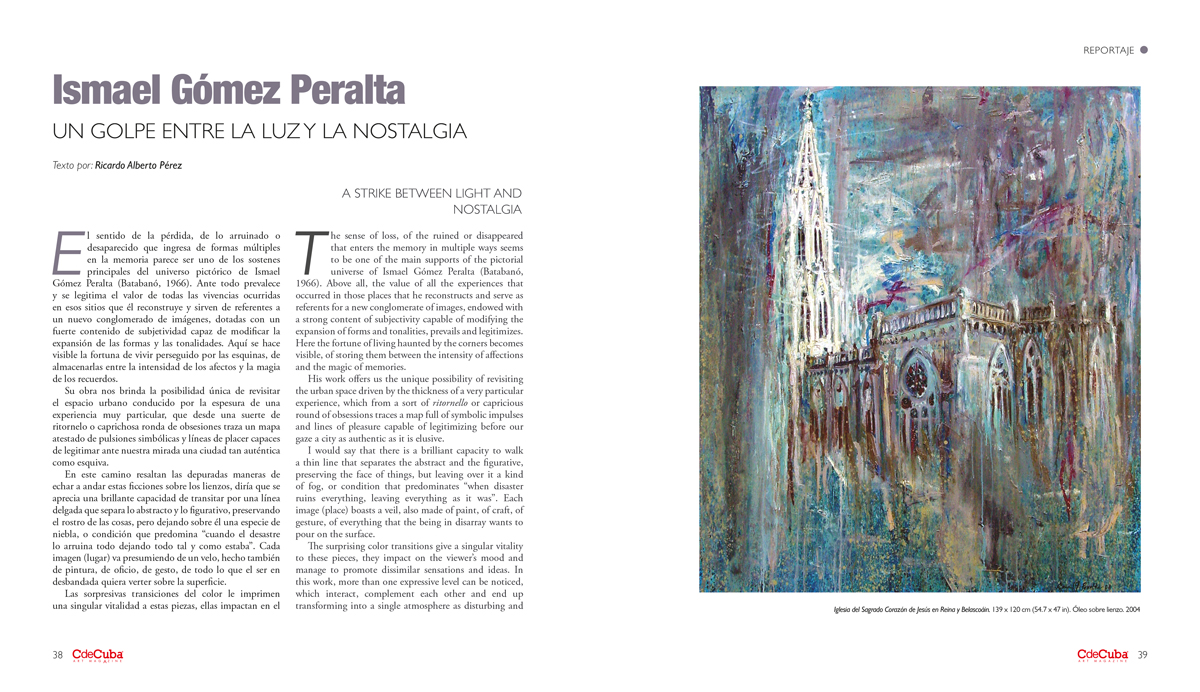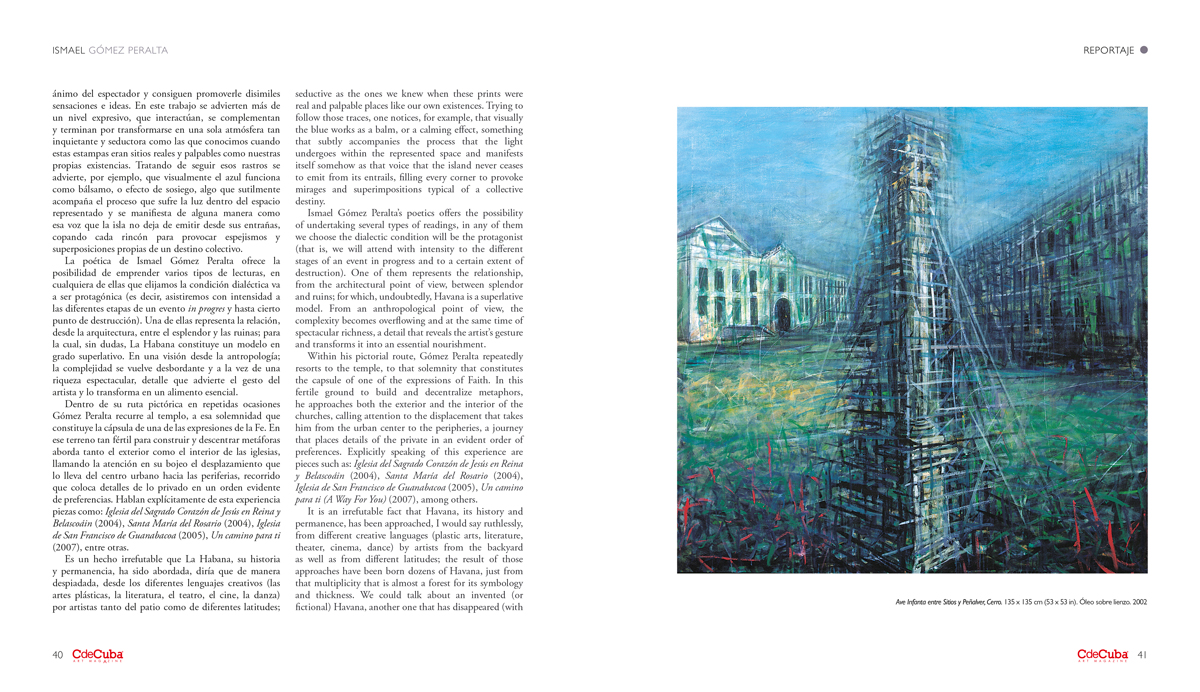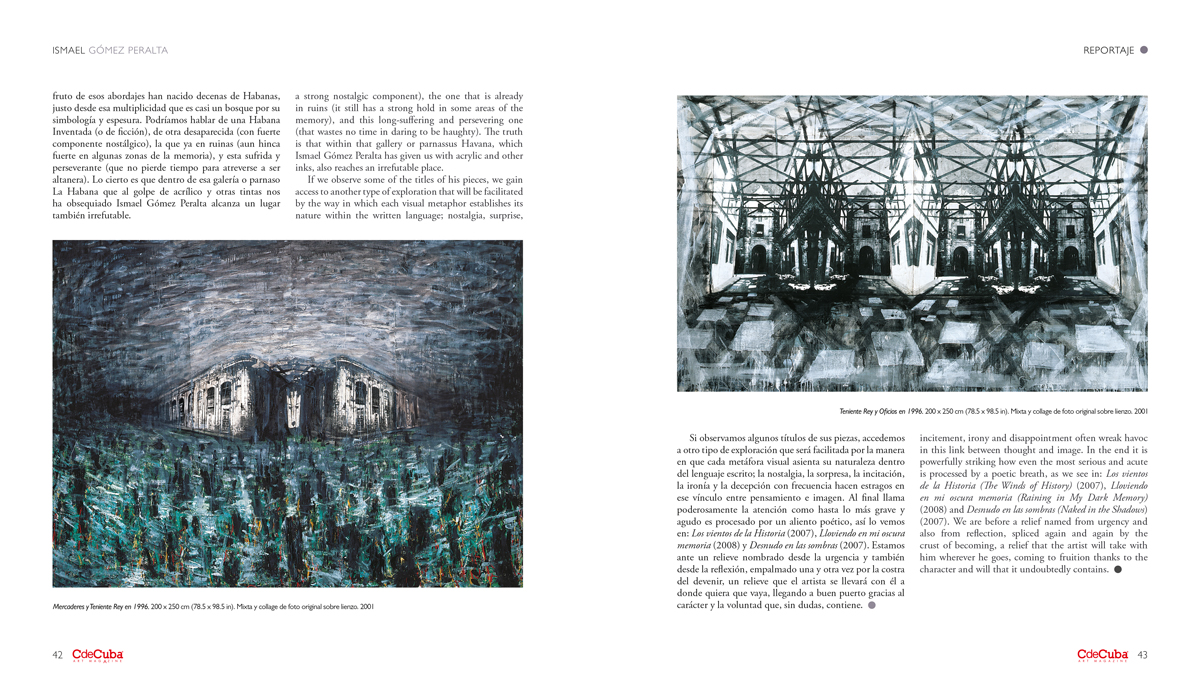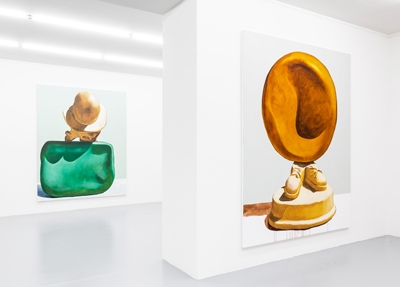A Strike Between Light and Nostalgia
By Ricardo Alberto Pérez
The sense of loss, of the ruined or disappeared that enters the memory in multiple ways seems to be one of the main supports of the pictorial universe of Ismael Gómez Peralta (Batabanó, 1966). Above all, the value of all the experiences that occurred in those places that he reconstructs and serve as referents for a new conglomerate of images, endowed with a strong content of subjectivity capable of modifying the expansion of forms and tonalities, prevails and legitimizes. Here the fortune of living haunted by the corners becomes visible, of storing them between the intensity of affections and the magic of memories.
His work offers us the unique possibility of revisiting the urban space driven by the thickness of a very particular experience, which from a sort of ritornello or capricious round of obsessions traces a map full of symbolic impulses and lines of pleasure capable of legitimizing before our gaze a city as authentic as it is elusive.
I would say that there is a brilliant capacity to walk a thin line that separates the abstract and the figurative, preserving the face of things, but leaving over it a kind of fog, or condition that predominates “when disaster ruins everything, leaving everything as it was”. Each image (place) boasts a veil, also made of paint, of craft, of gesture, of everything that the being in disarray wants to pour on the surface.
The surprising color transitions give a singular vitality to these pieces, they impact on the viewer’s mood and manage to promote dissimilar sensations and ideas. In this work, more than one expressive level can be noticed, which interact, complement each other and end up transforming into a single atmosphere as disturbing and seductive as the ones we knew when these prints were real and palpable places like our own existences. Trying to follow those traces, one notices, for example, that visually the blue works as a balm, or a calming effect, something that subtly accompanies the process that the light undergoes within the represented space and manifests itself somehow as that voice that the island never ceases to emit from its entrails, filling every corner to provoke mirages and superimpositions typical of a collective destiny.
Ismael Gómez Peralta’s poetics offers the possibility of undertaking several types of readings, in any of them we choose the dialectic condition will be the protagonist (that is, we will attend with intensity to the different stages of an event in progress and to a certain extent of destruction). One of them represents the relationship, from the architectural point of view, between splendor and ruins; for which, undoubtedly, Havana is a superlative model. From an anthropological point of view, the complexity becomes overflowing and at the same time of spectacular richness, a detail that reveals the artist’s gesture and transforms it into an essential nourishment.
Within his pictorial route, Gómez Peralta repeatedly resorts to the temple, to that solemnity that constitutes the capsule of one of the expressions of Faith. In this fertile ground to build and decentralize metaphors, he approaches both the exterior and the interior of the churches, calling attention to the displacement that takes him from the urban center to the peripheries, a journey that places details of the private in an evident order of preferences. Explicitly speaking of this experience are pieces such as: Iglesia del Sagrado Corazón de Jesús en Reina y Belascoáin (2004), Santa María del Rosario (2004), Iglesia de San Francisco de Guanabacoa (2005), Un camino para ti (A Way For You) (2007), among others.
It is an irrefutable fact that Havana, its history and permanence, has been approached, I would say ruthlessly, from different creative languages (plastic arts, literature, theater, cinema, dance) by artists from the backyard as well as from different latitudes; the result of those approaches have been born dozens of Havana, just from that multiplicity that is almost a forest for its symbology and thickness. We could talk about an invented (or fictional) Havana, another one that has disappeared (with a strong nostalgic component), the one that is already in ruins (it still has a strong hold in some areas of the memory), and this long-suffering and persevering one (that wastes no time in daring to be haughty). The truth is that within that gallery or parnassus Havana, which Ismael Gómez Peralta has given us with acrylic and other inks, also reaches an irrefutable place.
If we observe some of the titles of his pieces, we gain access to another type of exploration that will be facilitated by the way in which each visual metaphor establishes its nature within the written language; nostalgia, surprise, incitement, irony and disappointment often wreak havoc in this link between thought and image. In the end it is powerfully striking how even the most serious and acute is processed by a poetic breath, as we see in: Los vientos de la Historia (The Winds of History) (2007), Lloviendo en mi oscura memoria (Raining in My Dark Memory) (2008) and Desnudo en las sombras (Naked in the Shadows) (2007). We are before a relief named from urgency and also from reflection, spliced again and again by the crust of becoming, a relief that the artist will take with him wherever he goes, coming to fruition thanks to the character and will that it undoubtedly contains.






